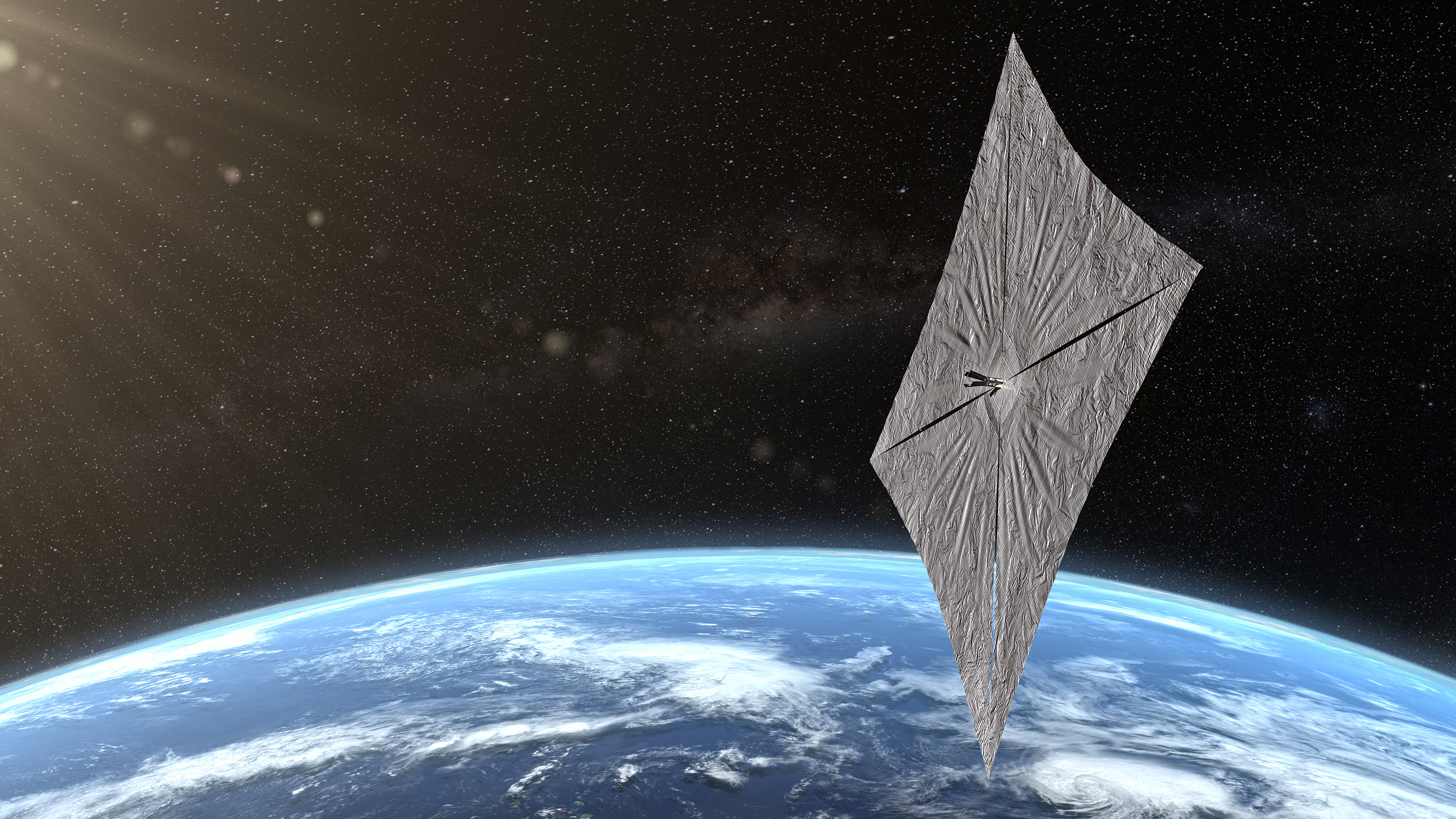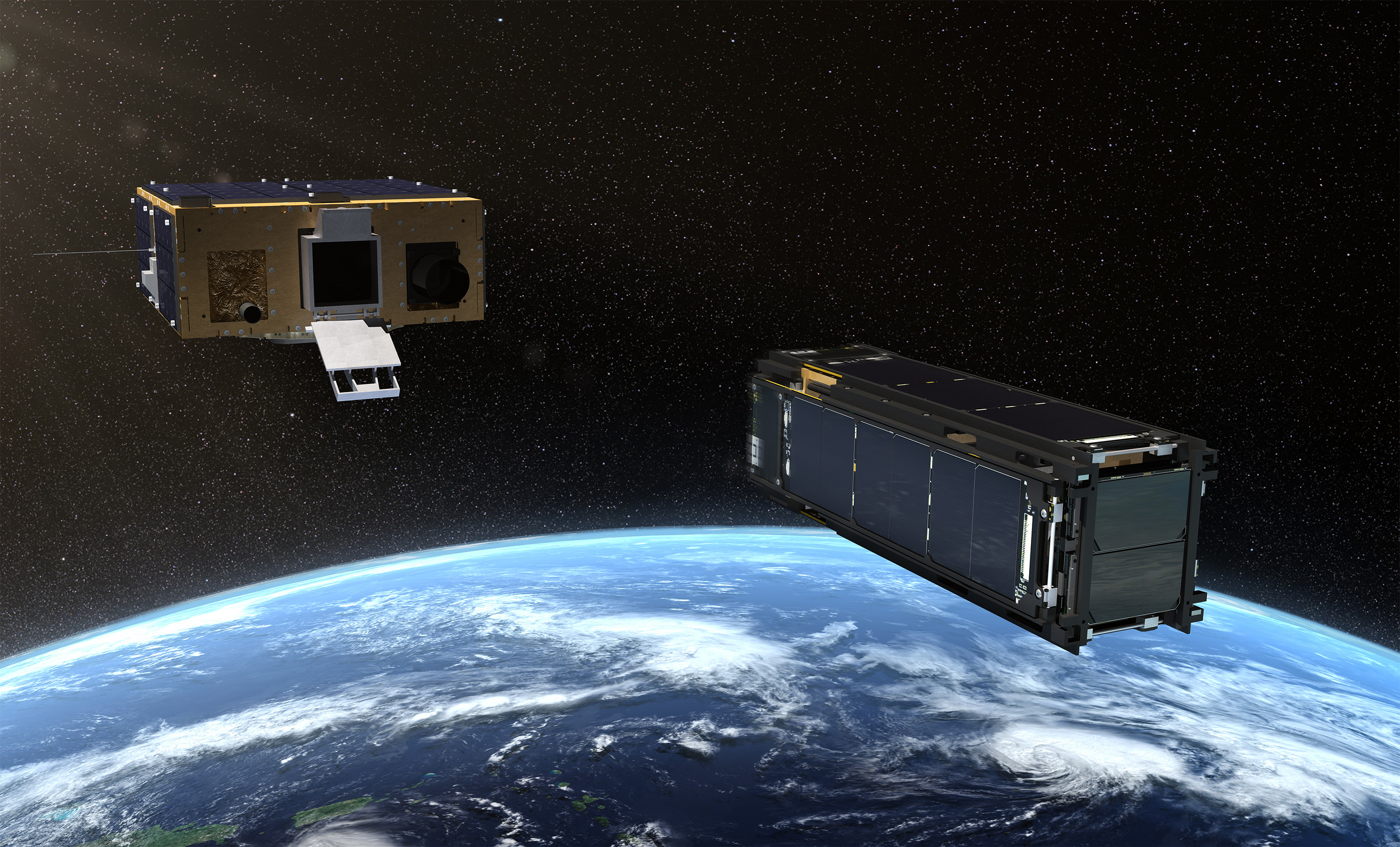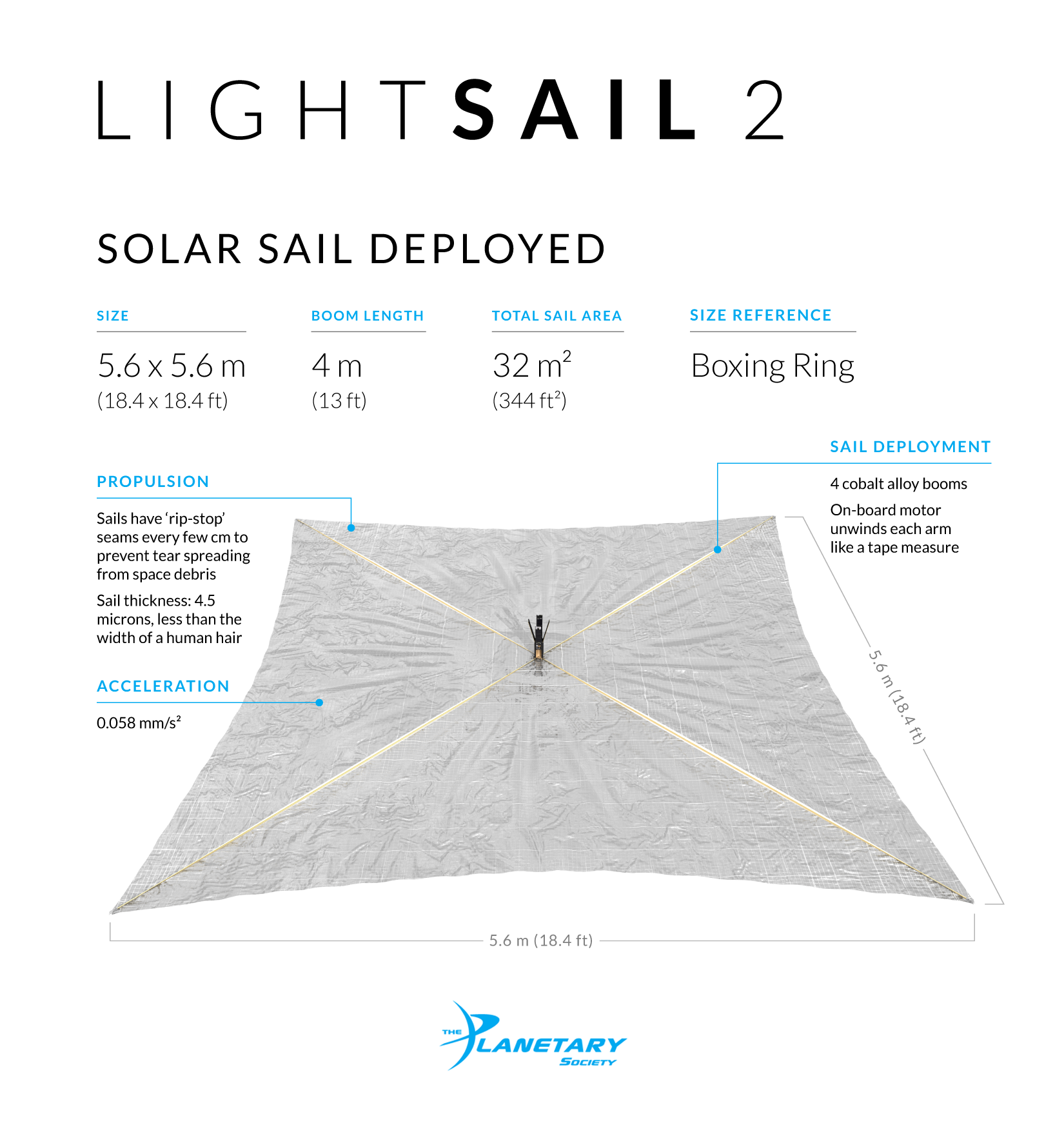
Bill Nye and Planetary Society Set to Ride a Sunbeam with LightSail 2 Solar Sail
Check out Google Maps to see where the LightSail 2 spacecraft will be orbiting.

Update, June 24 at 9:20 p.m. EDT: SpaceX has announced they are now targeting a 2:30 a.m. EDT (0630 GMT) launch time, three hours into their original launch window.
This Monday (June 24), the nonprofit organization The Planetary Society will launch LightSail 2, the first spacecraft propelled solely by sunlight, in a mission made possible by crowd-funding, officials said.
While it won't be the first spacecraft to successfully use a solar sail at some distance from Earth — that honor goes to the Japanese spacecraft Ikaros, which launched in 2010 — it is an important extension of that technology. The Planetary Society has twice attempted testing solar sailing in the past. LightSail 2's predecessor, a test mission called LightSail, launched May 20, 2015. Ten years prior, the organization had launched a lightsail dubbed Cosmos 1, but it was lost due to a rocket failure.
For Bill Nye, science communicator and CEO of The Planetary Society, the LightSail 2 mission taps into a long-held dream, inspired by his time spent 42 years ago sitting in Carl Sagan's classroom and listening to him talk about solar sailing, Nye said during a media teleconference held yesterday (June 20).
Related: Evolution of Solar Sails for Space Travel (Photos)
Like a sailboat, the spacecraft is propelled by pressure; in the upcoming LightSail 2 demonstration test in low-Earth orbit, engineers want to see if a spacecraft can be propelled by the pressure of photons (particles of electromagnetic radiation) emanating from the sun.
To be pushed along by this solar wind, the core body of the LightSail 2 spacecraft — which is about the size of a loaf of bread — will release a 344-square-foot (32-square-meter) solar sail to surf in space.
Get the Space.com Newsletter
Breaking space news, the latest updates on rocket launches, skywatching events and more!
"The key thing with Lightsail 2 is trying to demonstrate, for the first time, if you can do solar sailing with a small satellite; that it is viable, that we can control solar sailing," Bruce Betts, chief scientist and LightSail 2 program manager, said during the teleconference.
LightSail 2 will enter a circular, 447-mile (720-kilometer) orbit within a student-built spacecraft named Prox-1, which will blast off aboard a SpaceX Falcon Heavy rocket scheduled to launch during a 4-hour window that opens at 11:30 p.m. EDT June 24 (0330 GMT June 25).
Seven days after emerging from the rocket's fairing, Prox-1 will release the roughly 11-pound (5-kilogram) LightSail 2 cubesat, according to LightSail 2 project manager David Spencer. As LightSail 2 separates and drifts away, the spacecraft's radios will turn on, and if everything goes according to plan, the team will be able to monitor the craft to ensure that it's working properly. After four days of systems observations, the team will deploy the four triangular sails that collectively span an area about the size of a boxing ring, the team said.

In addition to offering an impressive new approach to propellant, the project also drew questions about its crowd-funded nature. LightSail 2 drew contributions ranging from $5 to $1 million, said Jennifer Vaughn, COO of The Planetary Society. That's a model that the organization intends to continue pursuing for other, equally cutting-edge space exploration projects.
"We've always been about kick-starting, seed-funding new technology … that's really how we tiptoed into solar sailing to begin with … we had some smaller opportunities that turned into bigger opportunities," Vaughn said. "Before we knew it, we were doing our own mission. The organization is going to continue down this path."
Vaughn added that the organization is planning to switch to an open proposal process in 2020 to draw a broader range of potential missions to tackle. But those initiatives won't include another solar sail; The Planetary Society wants to leave that to other organizations once the technology is clearly feasible.
Future solar sail projects could include interstellar projects, the team emphasized. "A lot of the missions that have been conceived to use solar sails that go to the outer edges of the solar system or beyond the heliopause only use solar sails during the early part of the mission, when they're near the sun," Spencer said. "Most of these mission concepts drop the sail off to get rid of that mass."
That means that someday, solar sail designers will need to address planetary protection policies, which keep space environments clean of microbial contamination from Earth (or vice-versa). Though not an issue for this test of LightSail 2, Betts said, it would certainly play a role in future missions with this design, and would depend on the direction in which the craft would travel.

"You know, one of the dreams in the solar-sailing communities is to get to the round number of a hundred kilometers a second [62 miles a second] of spacecraft speed relative to the sun, let's say," Nye said. "So in order to do that, you would have to have a spacecraft that can travel successfully very close to the sun and deal with the very high temperatures and high radiation environment near the sun." A sail material that could withstand this scenario, Nye said, might lead to a material that could be sterilized — "where you just cook the thing to kill the microbes" — by conventional heating.
But for now, solar sailing will stay within Earth's orbit — which means that you may be able to spot LightSail 2 in the sky. Keep in mind that spacecraft viewing is restricted to latitudes within 42 degrees of the equator. If you are within these margins, or if you are just curious, The Planetary Society recommends opening Google Maps, right-clicking the map, selecting "What's Here?," and plugging in 42 and -42 for the latitude to find the spacecraft.
- New LightSail 2 Spacecraft Will Boost Solar-Sailing Interplanetary Missions
- LightSail Spacecraft Snaps Solar Sail Selfie in Space (Photo)
- Stunning Animation of a Solar Flare Captures Its Life from Birth to Death
Follow Doris Elin Salazar on Twitter @salazar_elin. Follow us on Twitter @Spacedotcom and on Facebook.
Join our Space Forums to keep talking space on the latest missions, night sky and more! And if you have a news tip, correction or comment, let us know at: community@space.com.

Doris is a science journalist and Space.com contributor. She received a B.A. in Sociology and Communications at Fordham University in New York City. Her first work was published in collaboration with London Mining Network, where her love of science writing was born. Her passion for astronomy started as a kid when she helped her sister build a model solar system in the Bronx. She got her first shot at astronomy writing as a Space.com editorial intern and continues to write about all things cosmic for the website. Doris has also written about microscopic plant life for Scientific American’s website and about whale calls for their print magazine. She has also written about ancient humans for Inverse, with stories ranging from how to recreate Pompeii’s cuisine to how to map the Polynesian expansion through genomics. She currently shares her home with two rabbits. Follow her on twitter at @salazar_elin.









